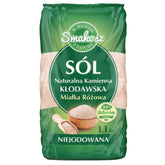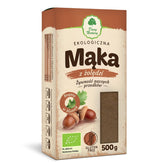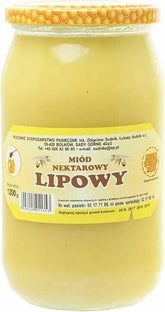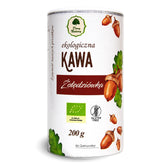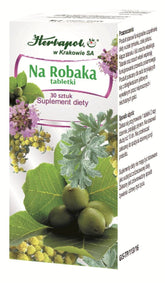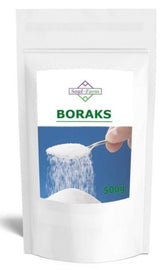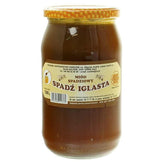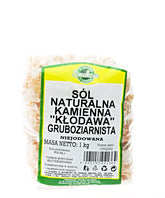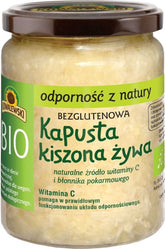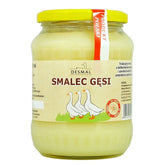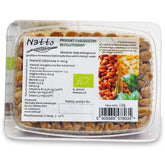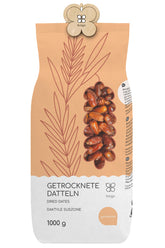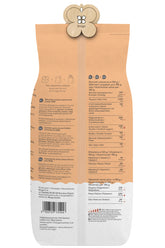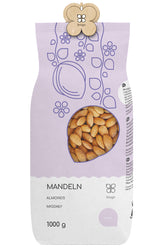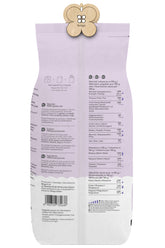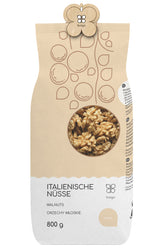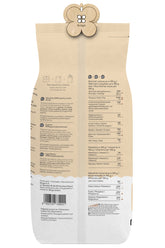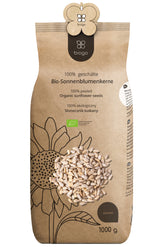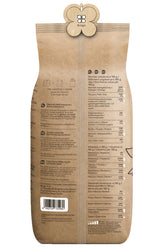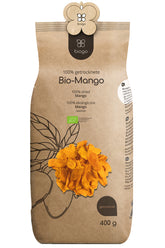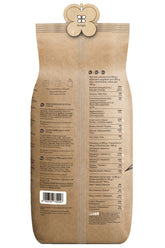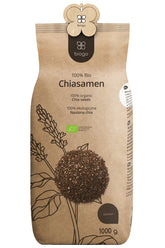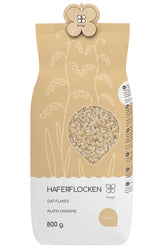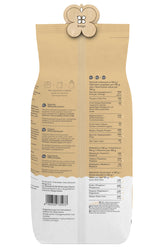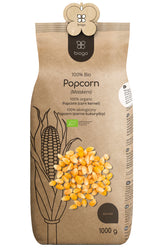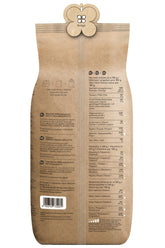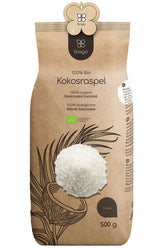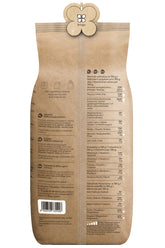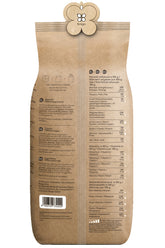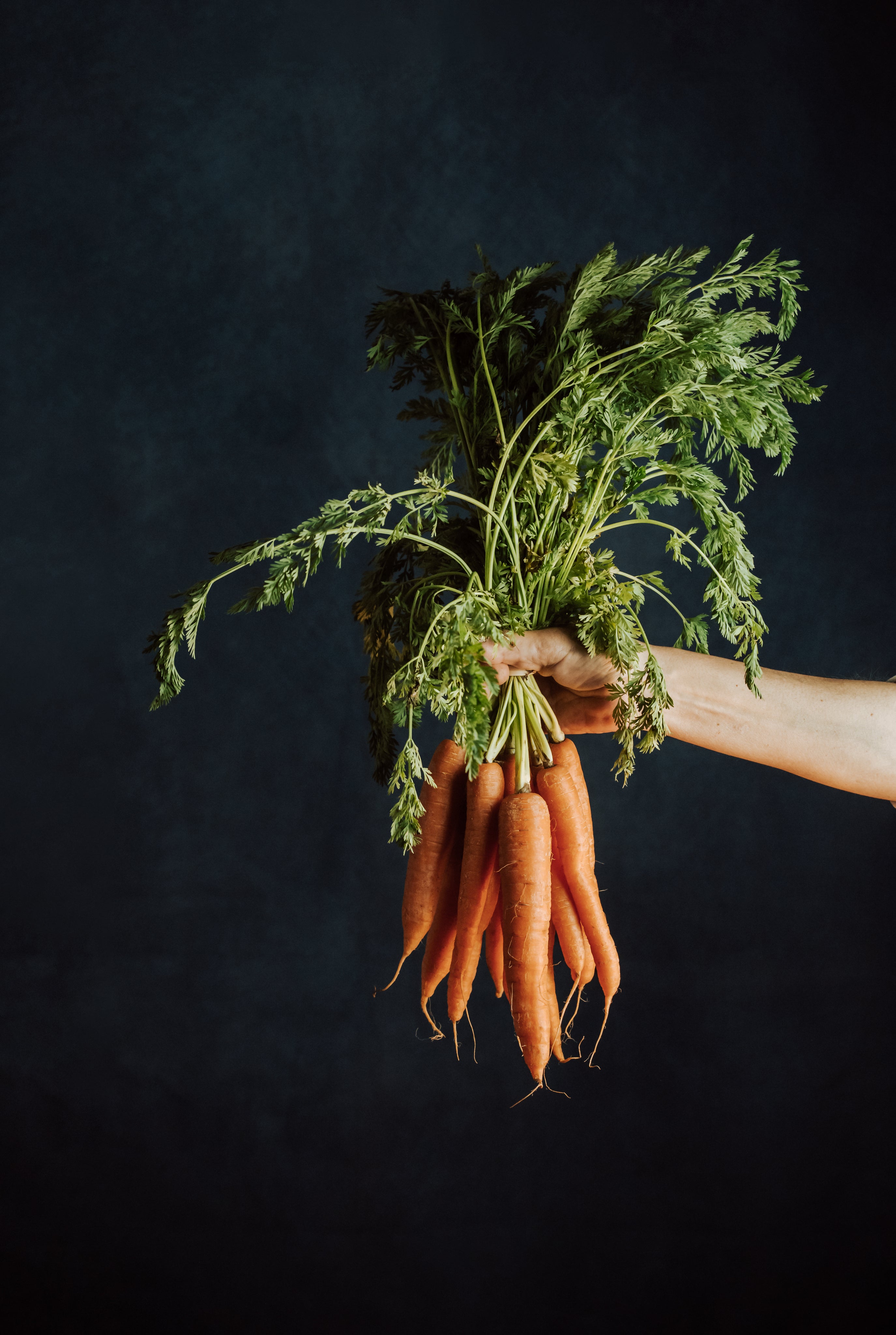Potatoes, a popular vegetable with two faces
- A brief history of the potato on the Old Continent
- Varieties and types of potatoes
- The content of micro and macro elements
- Health-promoting properties of potatoes
- The disadvantages of potatoes
- Summary
Potatoes are definitely one of those slightly underrated products. The fact is, they are incredibly popular in this part of Europe, and their appearance on our tables is not uncommon. The variety of varieties and types of potatoes makes them perfect as a side dish to many dishes, but also as a meal in themselves. Despite this, we tend to neglect them, and hardly anyone thinks about the nutrients they contain. It's worth noting that the potato is a vegetable with many faces. On the one hand, it's very healthy and rich in many essential macro- and micronutrients, but it's also a potential source of many diseases—including lifestyle diseases. Therefore, we decided to take a closer look at them, paying special attention to the pros and cons of eating them and including them in our daily diet.
A brief history of the potato on the Old Continent
The potato belongs to a large nightshade family. Interestingly, this name refers to both its edible part and the above-ground part. The plant is native to South America, where it is believed to have been cultivated since the sixth millennium BC. Its starch-rich tubers were a food source for the local population and the main reason for cultivating this plant. Interestingly, the potato was not known to the European population until the end of the 16th century. Today, we can enjoy it thanks to the Spanish conquistadors, who transported the first seedlings to the Old Continent via the sea route. It is worth noting that initially, only the aesthetic value of potatoes, primarily their beautiful flowers, was appreciated. They were also a highly exclusive commodity and could practically only be enjoyed in the gardens of the wealthy part of Western society. The situation changed dramatically when Europe at that time struggled with famine. At that time, the nutritional properties of their tubers were valued, which helped somewhat to overcome these adversities. Moreover, after this event, they lost their exclusive status and became available even to the lowest social classes, permanently appearing on the tables of almost everyone. However, they came to our country thanks to King Jan III Sobieski, who was to receive them as a gift after his victorious campaign against Vienna. Today, potatoes are the fourth most important source of carbohydrates in the world after corn, rice, and wheat. Due to their relatively high resistance to changing climatic conditions, practically anyone can grow them in their home garden. It is estimated that a statistically significant resident of Poland consumes about 30 kilograms of potatoes per year.
Varieties and types of potatoes
There are nearly 10,000 potato varieties, but that doesn't mean all of them are suitable for consumption. Currently, about 5,000 are widely cultivated, while in Poland we can find almost 100 varieties. Among the most popular are the Lord, Irys, Agata, and Vineta varieties. Each of them has a slightly different flavor and starch content, but they may also differ slightly in the micronutrients they contain. It's worth noting that there are potato varieties. This is helpful because each of them is more or less suitable for a specific type of dish. We distinguish four of them, and they are:
- Type A - Potatoes used for salads, baking, and grilling, for example. They contain a lot of starch, but also have moist, almost sticky flesh and a compact structure. These factors make them very difficult to overcook and do not fall apart during the process. The most popular Type A potatoes are Belana, Freezja, and Cykada.
- Type B potatoes are the most versatile in the kitchen. They are also called utilitarian potatoes due to their higher starch content than Type A, while also having a lower moisture content, resulting in their relatively high flouriness. These potatoes are also the most popular choice among consumers because they are suitable for almost any dish. They can be eaten boiled, baked, fried, or made into a delicious mashed potato. Typical examples of this variety are Albina, Gala, Jagoda, and Jasmin.
- Type C – these tubers are characterized by the highest starch content and low water content, which makes them quite dry and very floury. They fall apart relatively easily during heat treatment, but this is not the only negative feature. They are indispensable in the preparation of various pastas, potato dumplings, mashed potatoes, and even potato pancakes. They can also be successfully used as a thickener for all kinds of soups and even sauces. It is also worth remembering that in this case, we do not need to add as much flour as with the previous types of this plant. The most common varieties of this species include Bursztyn, Etiuda, and Koral.
- Intermediate varieties are nothing more than a combination of potato characteristics from the three types mentioned above. For example, there are varieties AB and BC. The former are considered universally applicable salad varieties, while the latter are a versatile variety. However, it's worth noting that in practice, the classification of this plant includes the first three types.
The content of micro and macro elements
Despite all the reports about the harmfulness of potatoes, they are low in calories and easily digestible. It's worth noting that the opposite opinion stems not only from the way they are consumed, but also from various additives. It will come as no surprise that we usually add large amounts of fat to them, even in the form of butter, margarine, and oil. Consumed in this form, they are actually very high in calories and fattening. Fried potatoes, even in the form of the popular French fries or potato pancakes, are certainly not the healthiest foods—but let's focus on potatoes alone, without unnecessary additives. 100 grams of this vegetable contains only 77 calories. This is almost five times less than, for example, soybeans. In addition, the same amount of potatoes contains about 2 grams of protein and almost 18 grams of carbohydrates, of which only 0.85 grams are simple sugars. The fat content is essentially negligible, as these macronutrients account for less than 0.1 grams. Interestingly, potatoes are one of the largest sources of vitamin C in our country's population. While they don't contain large amounts of this micronutrient, we eat enough of them to ensure we get enough of it. 100 grams of this vegetable contains about 20 mg, while an adult's daily requirement of this vitamin is 60 mg. It's also worth noting that they are a good source of beta-carotene, B vitamins, and fat-soluble vitamins such as A, E, D, and K. They also contain decent amounts of various chemical elements, including potassium, calcium, iron, manganese, iodine, fluorine, and magnesium. In this case, it behaves almost analogously to the vitamin C they contain. While the amounts of these micronutrients aren't huge, a high consumption of potatoes is certainly capable of providing us with sufficient amounts of these nutrients.
Health-promoting properties of potatoes
The fact is that potatoes cannot be considered a superfood. However, these seemingly inconspicuous tubers can provide our body with a number of beneficial effects when consumed. First, it should be noted that boiled potatoes, even without unnecessary additives, are easily digestible and readily absorbed by our digestive system. Therefore, they can form the basis of the diet of people struggling with various diseases of this system that require an easily digestible diet. They contain a lot of starch and do not linger in the intestines or stomach for too long. They also contain large amounts of fiber, which, in turn, makes them a kind of anti-constipation remedy. Another argument in favor of eating potatoes is the fact that they contain little sodium. Thanks to this, their consumption is safe for people suffering from, for example, hypertension or other heart diseases. Interestingly, it has been scientifically proven that the substance they contain, namely coucoamines, can slightly lower blood pressure. Interestingly, boiled potatoes are a great answer for heartburn. Even a small amount can quickly relieve us of this condition. In addition, the starch contained in tubers tends to be broken down slowly in our system. Thanks to this property, the glucose resulting from this breakdown is released into the blood gradually and over a long period of time. This avoids sudden fluctuations in blood sugar levels, but also keeps us full longer, which significantly translates into more energy for the hours after eating.
The disadvantages of potatoes
Despite their many benefits, potatoes also have their dark side. It's worth noting that despite the fact that they contain easily assimilated and digestible starch, they have a relatively high glycemic index. This means that blood sugar levels rise relatively quickly after consumption. This situation is especially dangerous for diabetics, as well as for people suffering from other diseases associated with impaired insulin secretion by the pancreas. Therefore, even people in excellent health should avoid consuming too much of this vegetable at once and try to limit the frequency of reaching for it. Such practices can lead to dysregulation of our carbohydrate economy and thus even increase the likelihood of insulin resistance. However, there is an easy way to limit starch intake. To do this, boil the tubers in a little water and then place them in the refrigerator for at least 24 hours. After this time, the starch it contains undergoes a specific conversion into starch, which is resistant to the action of our digestive enzymes. Therefore, its effect on the body is similar to that of fiber, which significantly reduces the rise in blood sugar levels after consumption. Furthermore, a very often repeated theory is that potatoes make weight loss difficult and even directly contribute to weight gain. It has been proven that high consumption of potatoes in the form of mashed potatoes, French fries, as well as baked or fried ones, significantly increases the risk of overweight and obesity. However, keep in mind that all these dishes are not just potatoes. Large amounts of fat in various forms are usually used in their preparation, so it is difficult to estimate the true effect of these tubers. Let's remember that boiled potatoes, without unnecessary additives, have a relatively low energy charge and, at the same time, perfectly satisfy hunger. Therefore, it is not worth demonizing them right away, but rather focus on limiting unnecessary and high-calorie additives. Interestingly, young and old potatoes that are already beginning to sprout contain solanine. It is toxic to our body and, in extreme cases, can even be carcinogenic. Therefore, you should avoid eating these two groups. However, we can easily protect ourselves against the harmful effects of this substance. It is enough to eat potatoes that are not too young, while those that are already sprouting should be carefully peeled and then the eyes cut out. It is also worth avoiding cooking stock, as there is a high probability that most of the solanine will seep into it.
Summary
Despite their commonality, potatoes can still pleasantly surprise us. After all, they contain a whole range of micro- and macronutrients we need for life. It's true that, like most foods, they also have disadvantages. However, don't let them overshadow their positive qualities. Another advantage is that they are a relatively inexpensive product that we can use to prepare many different dishes and successfully use in the form of additives. The variety of varieties and types of potatoes is daunting, thanks to which practically everyone will find their favorite among them.
THE PUBLISHER'S CHOICE
Dried dates 1 kg BIOGO
- €4,21
€4,95- €4,21
- Unit price
- / per
Almonds 1 kg BIOGO
- €11,69
€13,75- €11,69
- Unit price
- / per
Walnuts 800 g BIOGO
- €8,65
€10,18- €8,65
- Unit price
- / per
PULLED ORGANIC SUNFLOWER SEEDS 1 KG BIOGO
- €4,44
€5,22- €4,44
- Unit price
- / per
Dried organic mango 400 g BIOGO
- €10,99
- €10,99
- Unit price
- / per
Chia seeds (Salvia Hispanica) organic 1 kg BIOGO
- €7,02
€8,26- €7,02
- Unit price
- / per
Oat flakes 800 g BIOGO
- €2,34
€2,76- €2,34
- Unit price
- / per
Popcorn (corn kernels) organic 1 kg BIOGO
- €5,84
- €5,84
- Unit price
- / per
Organic coconut flakes 500 g BIOGO
- €10,07
- €10,07
- Unit price
- / per
Dried organic figs 800 g BIOGO
- €30,12
- €30,12
- Unit price
- / per

